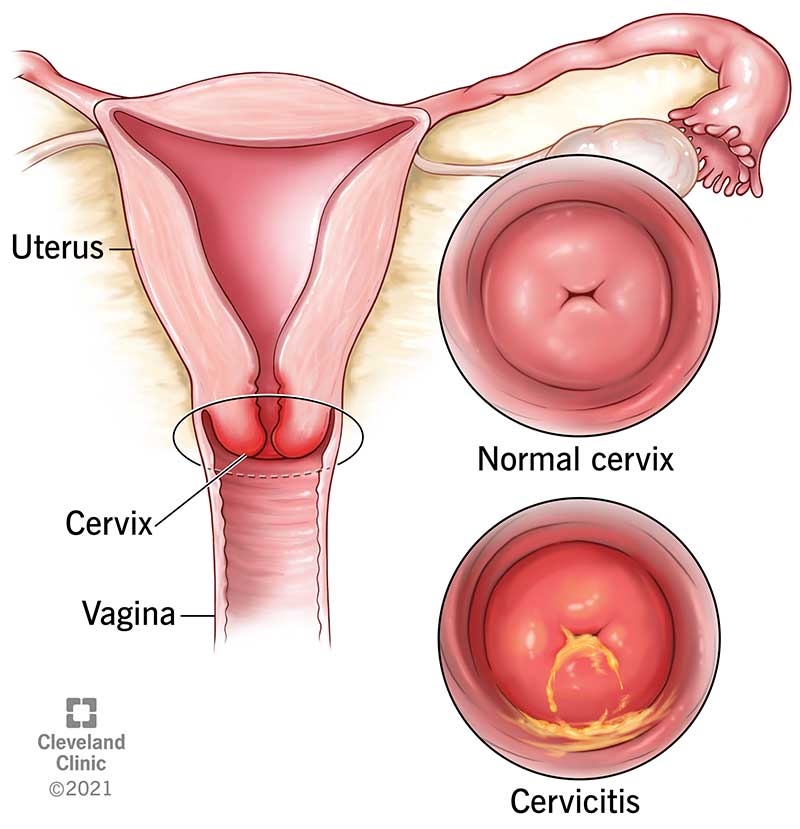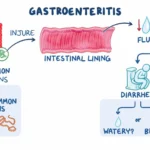Acute gonococcal cervicitis is a sexually transmitted infection (STI) caused by the bacterium Neisseria gonorrhoeae. This condition primarily affects the cervix, leading to inflammation and a range of symptoms that can significantly impact a woman’s reproductive health. Early diagnosis and treatment are crucial to prevent complications such as pelvic inflammatory disease (PID) and infertility. In this article, we delve into the key aspects of acute gonococcal cervicitis, providing a detailed guide to its symptoms, diagnostic methods, treatment options, and preventive measures.

it is an infection of the cervix caused by Neisseria gonorrhoeae. The cervix, the lower part of the uterus that connects to the vagina, becomes inflamed due to the presence of the bacteria. This condition is a common manifestation of gonorrhea in women and is often transmitted through unprotected sexual contact.
The infection can lead to severe complications if left untreated, including the spread of the bacteria to the uterus, fallopian tubes, and ovaries, resulting in PID. PID is a serious condition that can cause chronic pelvic pain, ectopic pregnancy, and infertility.
Symptoms of Acute Gonococcal Cervicitis
The symptoms of acute gonococcal cervicitis can vary in severity. Some women may remain asymptomatic, while others experience noticeable signs, including:
- Abnormal vaginal discharge: Often yellow or green in color and may have a foul odor.
- Pain during urination: A burning sensation or discomfort while urinating.
- Vaginal bleeding: Spotting or bleeding between menstrual periods or after sexual intercourse.
- Pelvic pain: Dull or sharp pain in the lower abdomen.
- Dyspareunia: Pain during sexual intercourse.
It is important to note that asymptomatic cases can still lead to complications and transmission of the infection to sexual partners.
Diagnosing
Accurate diagnosis of acute gonococcal cervicitis involves a combination of clinical evaluation and laboratory tests. The following methods are commonly used:
- Pelvic Examination: A healthcare provider may observe signs of inflammation, such as redness, swelling, or discharge from the cervix.
- Nucleic Acid Amplification Tests (NAATs): These tests detect the genetic material of Neisseria gonorrhoeae in vaginal or cervical swabs and are highly sensitive and specific.
- Gram Stain and Culture: A sample of cervical discharge is examined under a microscope or cultured to identify the presence of the bacteria.
- Co-testing for Other STIs: Since gonorrhea often coexists with other STIs like chlamydia, testing for multiple infections is recommended.
Treatment Options
The treatment of acute gonococcal cervicitis primarily involves antibiotic therapy. Due to the increasing prevalence of antibiotic-resistant strains of Neisseria gonorrhoeae, dual therapy is often recommended. The standard treatment regimen includes:
- Ceftriaxone: A single intramuscular injection of 500 mg (or 1 g for individuals weighing over 150 kg).
- Azithromycin: A single oral dose of 1 g to enhance effectiveness and reduce the risk of resistance.
Patients should abstain from sexual activity until they and their partners have completed treatment and follow-up tests confirm the infection has been eradicated.
Complications of Untreated Acute Gonococcal Cervicitis
Failure to treat acute gonococcal cervicitis can lead to severe complications, including:
- Pelvic Inflammatory Disease (PID): A serious infection of the female reproductive organs that can cause chronic pain and infertility.
- Disseminated Gonococcal Infection (DGI): The bacteria can spread to other parts of the body, such as the joints, skin, and heart.
- Increased Risk of HIV Transmission: Inflammation of the cervix can make it easier for HIV to enter the body.
Prevention
Prevention is key to reducing the incidence of acute gonococcal cervicitis. Effective strategies include:
- Practicing Safe Sex: Using condoms consistently and correctly during sexual activity.
- Regular STI Screening: Routine testing for sexually active individuals, especially those with multiple partners.
- Partner Notification and Treatment: Ensuring that sexual partners are tested and treated to prevent reinfection.
- Education and Awareness: Promoting knowledge about STIs and their transmission.
Acute gonococcal cervicitis is a significant public health concern that requires prompt diagnosis and treatment to prevent complications and reduce transmission. By understanding the symptoms, diagnostic methods, and treatment options, individuals can take proactive steps to protect their reproductive health. Prevention through safe sexual practices and regular screening remains the cornerstone of combating this infection.
For more information or to seek medical advice, consult a healthcare professional. Early intervention is essential to ensure optimal outcomes and prevent long-term consequences.
